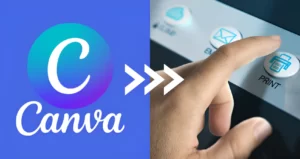In today’s world, Personalized Marketing has become an essential strategy to effectively reach customers. Generic and irrelevant messages are no longer sufficient; consumers expect unique and tailored experiences to their needs. In this sense, personalization in digital marketing plays a fundamental role in allowing brands to establish deeper and more meaningful connections with their customers.
Throughout this article, we will explore eight key points to achieve effective personalization in digital marketing, from audience segmentation to analysis and optimization of implemented strategies.
1. Audience Segmentation:
Audience segmentation is the crucial first step in achieving effective personalized marketing. It involves dividing your audience into smaller, specific groups based on common characteristics. By using demographic, geographic, behavioral, and preference data, you can create unique segments that allow you to tailor your messages and offers more effectively to the needs and interests of each group. By segmenting your audience, you can establish a more personalized connection with your customers and increase the effectiveness of your marketing strategies.
2. Research and Data Analysis:
Once you have segmented your audience, conducting thorough research and analyzing available data is crucial. Use analytics tools to better understand your customers and gain valuable insights into their preferences, behaviors, and needs. Examine demographic data, purchasing patterns, online activity, and any other relevant indicators for each audience segment. This research will help you tailor your marketing approach and create more personalized messages and offers.
3. Relevant Content:
The key to effective personalization in digital marketing is offering relevant content that resonates with each audience segment. Use keywords related to personalization in marketing to improve your visibility in search engines and attract your target audience. Investigate and understand the specific needs of each segment and create content that provides solutions to the problems or challenges they face. Present your products or services as the ideal answer to their needs. By providing relevant and personalized content, you will increase the likelihood of capturing your customers’ attention and generating interest in what you offer.
4. Deep Personalized Marketing:
Personalized marketing involves much more than simply displaying the customer’s name in an email. It’s about using the gathered information to offer unique and personalized experiences to your customers at every touchpoint. Use marketing automation tools to send personalized messages at the right time. Set up email sequences, social media messages, or push notifications that are triggered based on your customers’ behavior or actions. Adapt the content of your website based on each visitor’s browsing history. The deeper your personalization, the greater the impact on your customers and the success of your marketing strategies.
5.Intelligent Automation:
Intelligent automation is a powerful tool for achieving effective personalization in digital marketing. Utilize artificial intelligence and machine learning technologies to automate and optimize your marketing campaigns. These tools can analyze large volumes of data and provide personalized recommendations for each audience segment. They will help you automate the process of segmentation, personalization, and message delivery, allowing you to save time and resources while increasing the relevance of your communications with customers.
6. A/B Testing and Optimization:
Effective personalization in digital marketing requires a constant focus on optimization and continuous improvement. Conduct A/B tests to evaluate the effectiveness of different personalized approaches and messages. Compare different versions of emails, ads, or landing pages to identify which elements yield better results. Use performance metrics such as open rates, clicks, and conversions to measure the impact of your strategies and make adjustments accordingly. Continuous optimization will allow you to refine your personalization tactics and maximize the return on investment of your marketing efforts.
7. Real-time Interaction:
An important aspect of personalization in digital marketing is the ability to interact with your customers in real time. Use live chats, virtual assistants, or chatbot tools to provide quick and personalized responses to your customers’ inquiries. These real-time interactions will enable you to address issues, provide personalized recommendations, and create a more satisfying experience for your customers. Real-time interaction also provides an opportunity to gather additional data about your customers and further enhance your personalization in the future.
8. Feedback and Adaptation:
Last but not least, customer feedback is essential for adapting and improving your personalization strategies in digital marketing. Seek feedback from your customers about their experience with your personalized messages, offers, and experiences. Use surveys, online reviews, and other means to gather valuable information that helps you identify areas for improvement. Leverage this feedback to adjust your approach and adapt your personalization strategies accordingly. Continuous feedback will enable you to keep your personalized digital marketing up to date and relevant.
Effective personalization in digital marketing is key to establishing deeper and more meaningful connections with your customers. By implementing audience segmentation, research and data analysis, relevant content, deep personalization, intelligent automation, A/B testing and optimization, real-time interaction, and continuous feedback, you can achieve effective personalization that translates into better results for your business. Always keep your focus on your customers and adapt your marketing strategies to deliver personalized and relevant experiences at each stage of the customer journey. Personalization in digital marketing is a powerful tool to stand out in an increasingly information-saturated world and effectively reach your target audience.








